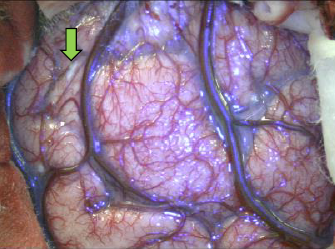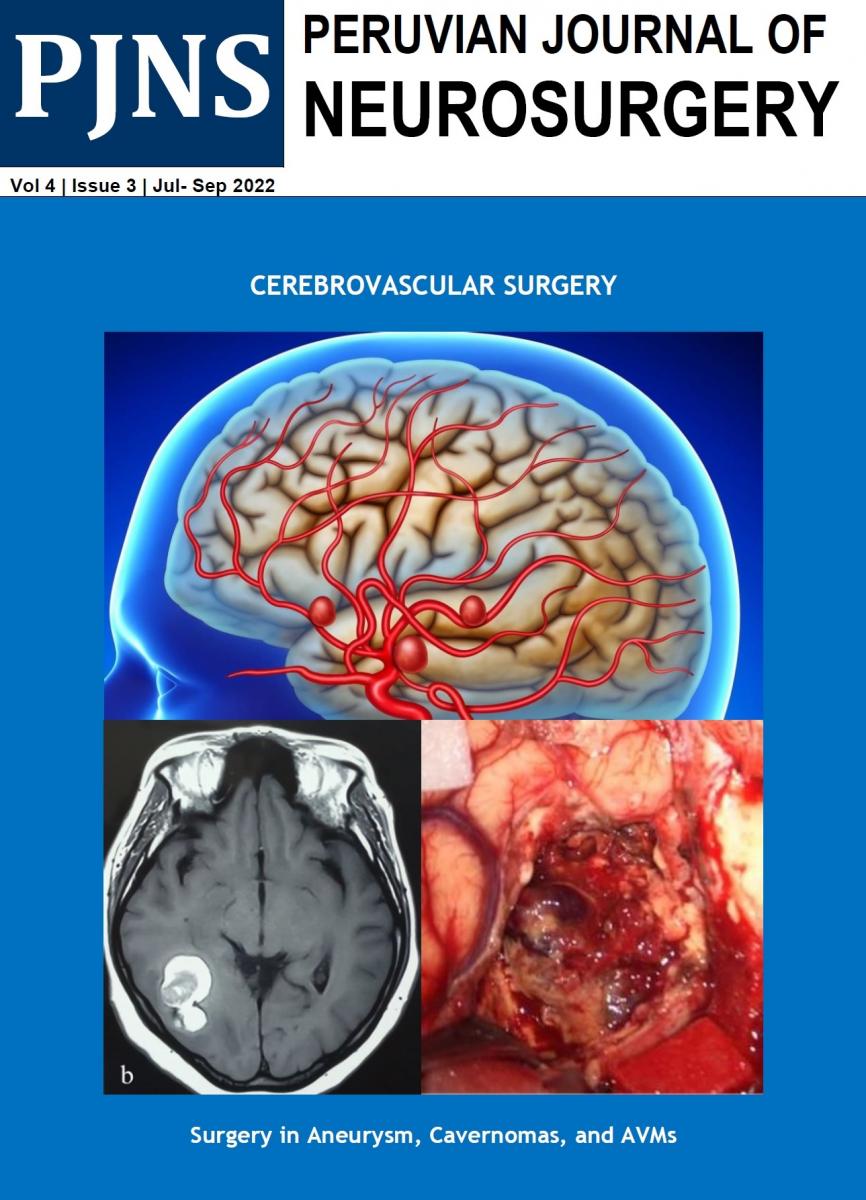Usted está aquí
Peruvian Journal of Neurosurgery
First experience using 5-ALA for high grade gliomas in the Almenara Hospital
ABSTRACT
Introduction: The most frequent brain tumors in adults are high-grade gliomas and meningiomas. Having a discouraging prognosis of high-grade gliomas and knowing that the prognosis improves depending on the degree of tumor resection, is that new therapeutic strategies are sought, one of them is the use of 5-aminolevulinic acid (5-ALA) thanks to the fluorescence it produce in the tumor it allows to improve the rate of tumor resection, finally improving the prognosis of the patients. We presented the first experience in Almenara Hospital of the use of 5-ALA in a patient with a diagnosis of high-grade glioma.
Clinical Case: Presents itself the case of a 48-year-old male patient with clinical evidence of motor and sensory deficit contralateral to the lesion, without alteration of the state of consciousness. The magnetic resonance of the encephalon with contrast, a right frontal lesion is evidenced compatible with high-grade glioma. Therefore, it is programmed for guided surgery with fluorescence, where 5-ALA is used, and a total resection of the tumor is performed, obtaining an anaplastic ependymoma as pathological anatomy. The patient presented an increase in the motor deficit, which he later recovered. In the tomographic control with contrast at 4 months, complete tumor resection is evident.
Conclusion: 5-aminolevulinic acid is a drug that helps to properly delimit the edges of a high-grade glioma, by using a modified microscope, and thus increases the degree of tumor resection, ultimately improving the prognosis of the disease.
Keywords: Glioma, Aminolevulinic acid, Ependymoma, Fluorecense, Prognosis. (source: MeSH NLM)



